5 Ways to Find Expired Domains for Link Building
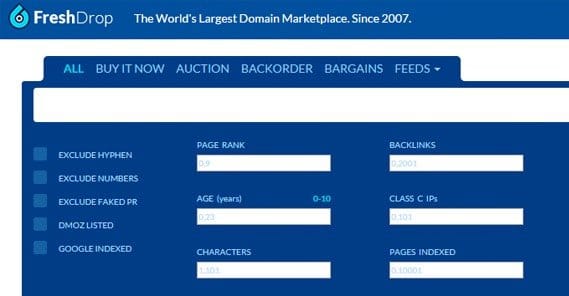
Building links with expired domains is a somewhat uncommon strategy. We’ve mentioned it and written about it before. It’s a pretty simple process, but it requires a bit of research and investment to do properly. Here’s what you do:
- Locate a valuable, relevant expired domain.
- Vet that domain to make sure it isn’t part of a spam network.
- Turn that domain into value for you.
The bulk of this article is going to be about step 1, but I’ll cover steps 2 and 3 here briefly. Let’s start from the end and work our way to the beginning, shall we?
Making an Expired Domain Work for You
How can you turn an expired domain into value? There are a few different methods people use. The most popular is the simplest as well; a 301 redirect. A 301 redirect will pass some link juice coming in to the expired domain and send it to your site, as well as redirecting all incoming traffic to your site.
Another option is to build out a microsite on the expired domain and use it as a filter. This will cut the amount of direct traffic and links that make it to your main site, but it will act as a filter to send only the most interested, qualified traffic to your main site. Think of it like a landing page.
A third option is to build out a basic blog and add it to a blog network that is powering your main site. You need to be careful with this, as private blog networks can be considered a spam technique, particularly if you then use them to sell links to other sites.
Generally, the redirect is the safest method, particularly if you focus on redirecting in relevant domains that used to host sites with relevant content. The less relevant the site was to the content it now points to, the less valuable to you the redirect is going to be.
Vetting an Expired Domain
That’s where vetting the domain comes in. You want to make sure that the domain you’re considering buying is not going to harm you when you use it, and that it has some residual value that you can leverage to make your own site better. Here are some things to check and look out for.
- Existing links. A lot of expired domains were once part of a churn and burn scheme or a black hat blog network. That means a lot of the links pointing in to them are spam sites. You don’t want spam sites linking to your main site, so you need to consider carefully if the domain is worth buying, considering all of the cleanup work you’ll have to do. Normally, it won’t be.
- Existing redirects. Again as part of a gray or black hat link scheme, people will have existing redirects from spammy domains pointing at the expired domain you’re considering. These are harder to clean up than links, so you really want to know if they exist.
- Prior content. If the site once was host for a spam site, you might not want to redirect it to your main site. Even if it has been expired for a while, that negative value might still exist in Google’s index. Of course, a site that has been expired for that long probably doesn’t have residual value for you to use in the first place.
- Prior reputation. Check to see if the site had branding, and if that branding leads to a lot of negative reviews. Occasionally you can spin it as a takeover, but most of the time it’s not worth the hassle.
- Existing audience. If there’s a forum or community attached to the existing domain, is it active and valuable? You may be able to leverage that along with the domain itself.
- Indexation. Make sure the site, if there still is a site, is indexed in Google. You don’t want to try redirecting traffic from a domain that isn’t indexed; you’ll get virtually nothing out of it.
In general, as you can see, it’s a list of factors that affect SEO but aren’t predicated on the content of the site that exists or used to exist on the domain. That’s because you don’t care about the site itself, all you care about is the incoming traffic, incoming links, and potential existing community. Those are the valuable resources you can use, or the harmful poison you want to avoid, depending on their quality.
Finding Expired Domains
Generally, there are only a few factors to consider relating to the domain itself when you’re looking to buy it.
The first is relevance. You want the domain to be related to your niche, so that any incoming traffic finding it will be willing to browse your site. It’s no good redirecting a site about pool supplies to your site about bug collecting. Google might even identify that as spam, and hurt your site because of it.
The second is keywords or branding in the domain. What could hurt you, or what could help you out? Exact match domains are bad for main site branding, but they’re not completely valueless for 301 redirected link building, so don’t exclude them entirely.
The third is, of course, cost. Some expired domains have long histories and a lot of built-up value, and those are very likely going to be expensive. They are also probably going to be pretty good value for your site. The question you need to answer is; is that potential value going to allow you to profit from buying the domain, or is the domain too expensive and will result in a loss?
So how can you find these expired domains in the first place? Here are a few different options.
Option 1: Xenu’s Link Sleuth
Xenu’s Link Sleuth was initially conceived as a broken link checker for websites, developed because Web Analyzer was a buggy mess and didn’t suit the developer’s needs. The dev decided to forsake graphics and fancy product faces in favor of pure functionality.
It’s relatively easy to get working. The first thing you need to do is visit the homepage – as barebones as the program – and click the download link off to the side. Download and install the program, and you’re ready to go.
Next, start running a few Google searches for resource sites in your niche. What you’re looking for are sites with large banks of links on one page. Search queries like “[keyword] + “links”” or “site:edu “resources”” are both good options, but you can search for anything you like. Ideally, you will limit your search results to a custom date range that spans several years but not the most recent 2-3 years. You’re looking for pages that haven’t been updated in a while, to increase the chances of them having broken links.
In Xenu, go to options and click preferences. Set the maximum depth to 1, which is checking just links on the page, not throughout the whole site. Then click file and check URL. Enter the URL of the page you picked in the previous step, and hit okay.
This will bring up a lengthy list of the links on that page as well as their status, as represented by an error code. There are a few different error codes; you’ll be looking for the “no such host” error. That means the domain is no longer pointed at valid hosting, and may be open for you to take.
I recommend harvesting a lot of potential URLs. You’re only going to have about a 5% success rate on finding broken links that have available domains. When you find available domains, check them according to your criteria as listed above, and determine which are best for your purposes.
Option 2: ExpiredDomains.net
This option is a little easier than using Xenu, because it doesn’t require that you go out and find relevant resource pages to scan looking to hit gold. Instead, it uses a website that itself is already scanning for broken links, and gives you the ability to find and buy them right away.
The first thing to do is visit the site, ExpiredDomains.net. You will need to create a free account, which only requires a name and email address. I don’t know if they will send you spam or anything; my primary email address for these things is so spam-riddled I hardly notice anymore.
Once you have an account and are logged on, click the Deleted Domains section and click Deleted .com. This will limit your search to just the .com domains, which are the most valuable for this sort of thing. You’re pretty much never going to care about the .be or .tv or .net or whatever else domains exist out there. The only reason to use those is if you happen to find some with decent traffic and can buy them up super cheap. If you’re spending more than a couple dollars on them, you’re probably overpaying.
This will bring up a very sizable list. We’re talking literal millions of domains here. Obviously, it’s going to need some filtering. I recommend checking “no fake PRs” and “only with dmoz entry” to filter things down. This will cut out a lot of them. You can also do “no unsure PRs” but that might backfire. It was a much more valuable filter before Google stopped updating PageRank.
Now you’re looking for domains that look ideal. Look for domains that have been dropped very recently, with a high as possible number of backlinks and domain pop (DP) rating. You can play with other filters as well.
Once you have a list, you can evaluate them, decide which are worth buying, and move on with your value strategies from there.
Option 3: DomCop
DomCop is another site much like Expired Domains. It operates off a different database, though, and has a different system for filtering and analyzing domains via different metrics.
The first thing to do is visit the site, of course. You can find it here. You can browse some domains without signing up, but you get more features for registering. It’s a 7-day free trial, after which you will have to pay for a cheap plan. The newbie plan is $32 a month and is very much worth it if you do a lot of domain buying. If you don’t, you can get away with the free trial and then using other methods later. The only limitations on the newbie plan are access to the archive and exporting records.
You will want to click over to the Advanced tab to get access to all the filters, which you will have to click “show filter” to see. There’s a lot here, but you don’t need a ton of it. Ignore the entire Alexa box, for example. Under the Extensions box, uncheck everything except .com. Uncheck the bargain bin, closeout, and offer/counter offer sections from the listing types. You can also choose specific industries if you want, though that’s not essential. You may also want to hide adult, spammy, and possibly branded domains in the miscellaneous box.
This should all together give you a good list. You can then browse through the list, adjust your filters as necessary, and pick out domains with potential. You’ll have to do your filtering as normal, locate domains worth picking up, and buy them before someone else gets to them.
Option 4: Fresh Drop

Another website-based resource here. You might notice that everything except Xenu is a website resource. There’s a good reason for that; everything you want out of Xenu is done by the website, so they’re a lot easier to use. The caveat is just that Xenu can get you links that other people haven’t noticed, while these high profile sites have a lot of other users, and thus have a lot of competition.
Fresh Drop can be found here. It has many of the same filters as the other sites, so here’s what I like to set:
- Uncheck all TLDs except .com, as usual. You can expand this to .nets and .orgs if you really want, but ignore all the country code TLDs.
- Check the Language section and set it to English only, unless you have a foreign or bilingual site you want to promote.
- DMOZ or Google listed. Both together might filter out everything, so be cautious. If you find your list is too small after checking one, try the other.
You can also play with other filters, like number of backlinks or price range. I don’t generally filter these, because unless the site has no backlinks whatsoever, the exact number doesn’t matter too much.
Option 5: RegisterCompass
This is the fifth method I’m going to talk about, but rest assured that there are dozens more sites that serve the same purpose. If you don’t like the paid options on this list – of which this is one – you can find another free site. There are plenty out there.
Register Compass has something like 3 million expired domains, half a million about to expire, and 2.5 million in auction in their database. Of course, plenty of them aren’t going to work for your purposes. That’s what filters are for.
In order to access the search and filters, you will need to sign up. It’s a slightly more intense form, requiring your name, email address, actual address, and login details. You will also have to pay; membership is $37 per month. Again; reasonable if you’re making this a long-term strategy, less so if you’re experimenting for a month. On the plus side, they have a money back guarantee if you make the request within the first month and have made less than 25 searches.
As usual, the standard sort of filters apply. Narrow down your search to .coms, find sites that aren’t spam, and look for sites in relevant niches. Test them against your criteria, and find the sites that work for your purposes.
A Note on Private Blog Networks
Some will tell you that a PBN is a great way to go. Spin up some content, make template sites on expired domains, link them to your site. You can get quite a bit of quick link juice that way, and many people think it’s an “invisible” technique that Google can’t see.
The fact is, Google knows all about PBNs and how to find them. Every week you can read about some PBN or other getting taken down. If you want link juice, you need your blogs to be indexed, and that means Google can see them. You’re not going to be able to obfuscate what they do.
Now, a PBN can work, but they aren’t long-term strategies unless you’re constantly removing and adding new blogs. This can be quite tedious, though, and only serves to maintain the power of the PBN.
It’s really a better idea to use the 301 redirect method and focus your energies elsewhere.
 ContentPowered.com
ContentPowered.com
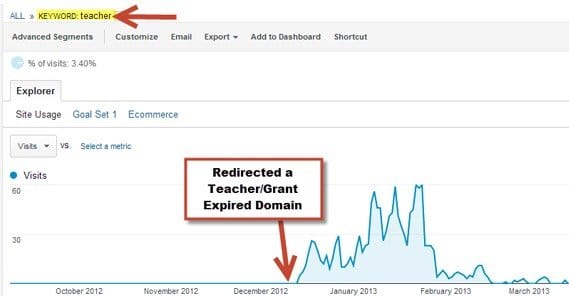

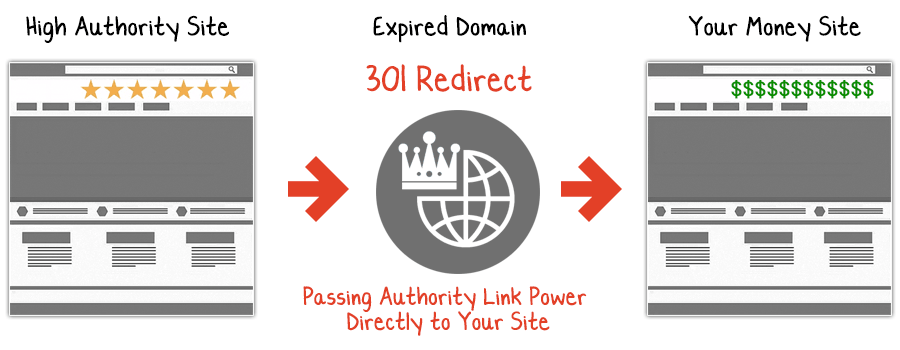

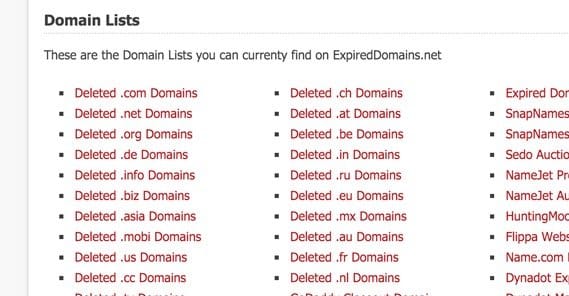

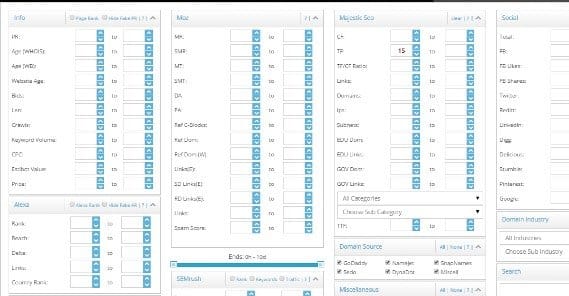
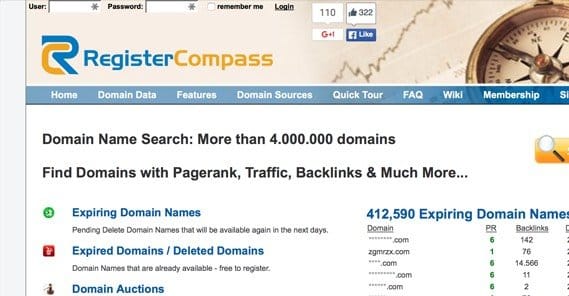

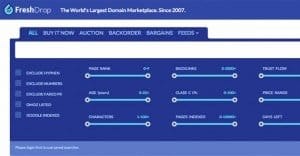


To rank blogs with good content in medium and high competitives niches, the key is to find dropped domains with very good metrics you can buy for 6$ and have full control over them.